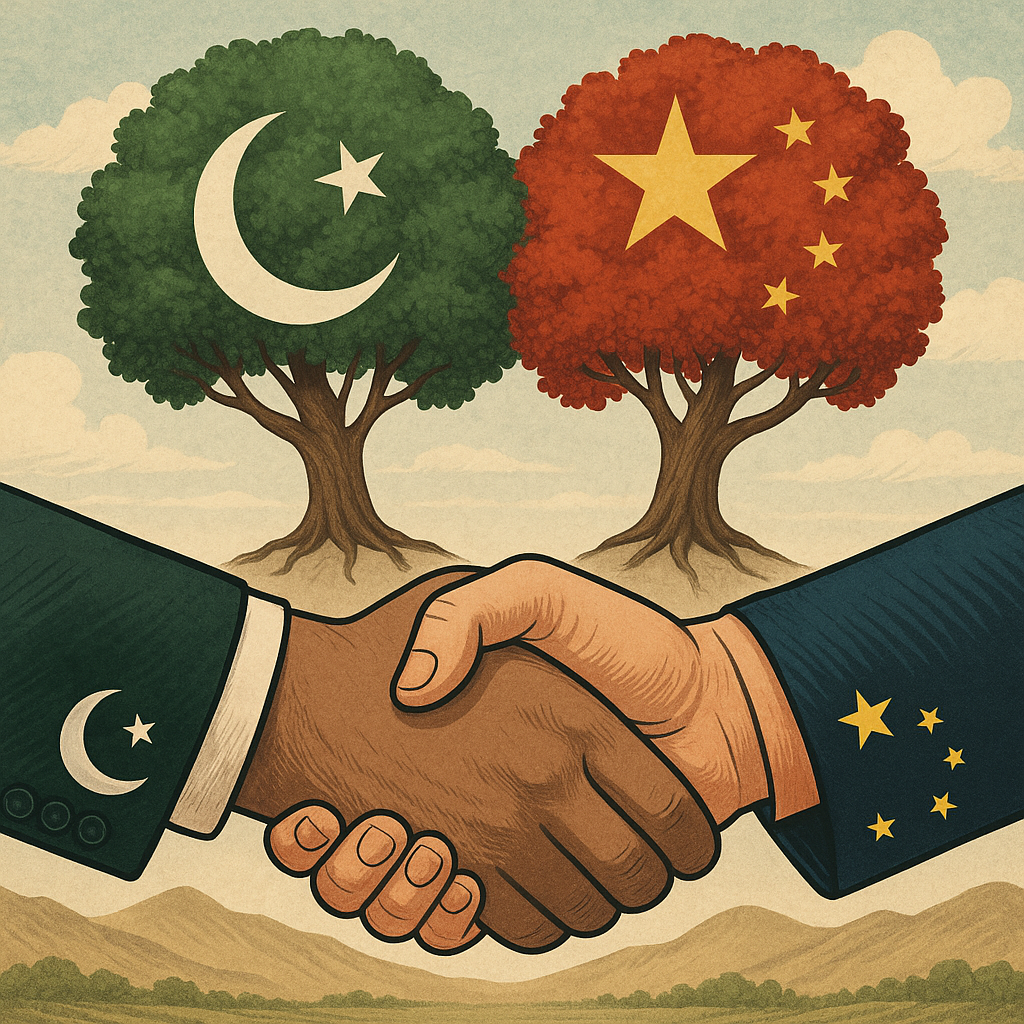Azhar Rashid Khan, PSP
With the second phase of the China–Pakistan Economic Corridor (CPEC) now underway, that rhetoric is being tested. This phase expands from roads and power plants to agriculture, technology, and industry—holding real promise for Pakistan’s economy. Yet while China has already secured strategic and economic dividends, Pakistan risks being left behind. Beijing is locking in long-term gains, while Islamabad has failed to mobilize domestic investors, pension funds, and ordinary savers. That is not simply a financial oversight—it is a profound policy failure.
Building a Shared Future: China’s Visionary Progress
For China, the China–Pakistan Economic Corridor (CPEC) represents a calculated geo-strategic gambit, leveraging Gwadar Port to ensure energy security and trade diversification by bypassing the Malacca chokepoint. Pakistan offers both a vast consumer market and fertile ground for industrial offshoring amid rising Chinese labor costs. Beyond economics, CPEC is a cornerstone of Beijing’s regional statecraft, amplifying its geopolitical influence across South Asia and the Indian Ocean. Thus, China has adeptly transformed CPEC into a dual-use asset: an instrument of economic resilience and a platform for strategic power projection. Pakistan’s transition to a CPEC co-architect requires domestic catalytic investment and policy efficacy to overcome governance deficits and claim its equitable share of the value chain.
Pakistan’s Passive Role
Pakistan, by contrast, has confined itself to providing land, manpower, and political goodwill. Domestic financial participation in CPEC is negligible. No CPEC bonds, no infrastructure-linked mutual funds, no industrial REITs. Pension and insurance funds remain idle instead of being channeled into long-term projects. Even the diaspora has been left without structured investment avenues. The cost of this passivity is twofold: dependency on Chinese financing, and exclusion of ordinary Pakistanis who should be stakeholders in the nation’s growth. Such an arrangement undermines not only economic sovereignty but also the very spirit of partnership.
The EU Window: Untapped Export Leverage
CPEC Export Processing Zones (EPZs) offer a unique opportunity to expand beyond China’s orbit. Pakistan already enjoys preferential access to the European Union under the GSP+ scheme, which eliminates tariffs on most exports. The EU is now Pakistan’s largest trading partner, accounting for 32% of exports in 2023, with textiles and apparel dominating the flow. Since receiving GSP+ status in 2014, Pakistan’s exports to the EU have grown by over 100%. Roughly 88% of EU-bound exports claim duty-free access. If linked with CPEC EPZs, this advantage could attract European and multinational firms seeking cost-effective entry into global markets.
“CPEC Export Zones could give Pakistan tariff-free access to Europe and beyond—if only Islamabad seizes the moment.”
Products manufactured in Pakistan could reach not only Europe but also the Middle East, Africa, and Central Asia faster and cheaper than from East Asia. Such diversification would help Pakistan move beyond its dangerous reliance on textiles, opening doors to value-added agriculture, IT services, renewable technologies, and engineering goods.
Human Capital and Learning Curve Benefits
The second strategic gain lies in human capital development. Pakistan’s labour market remains concentrated in low-skill, low-wage sectors. CPEC zones, if structured properly, could serve as training grounds for underdeveloped regions such as Balochistan, interior Sindh, and southern Punjab. Partnerships with Chinese and EU firms would bring advanced apprenticeship programs, technology transfer, and technical training. This would allow Pakistan’s workforce to climb the learning curve—from low-skill labour to medium- and high-skill manufacturing and services. An inclusive model of growth would not only raise productivity but also stabilize society by providing jobs in regions most vulnerable to unemployment and extremism.
“Linking CPEC to EU markets and human capital development could transform Pakistan from a corridor into a competitive hub.”
The Way Forward
To capture these benefits, Pakistan must move decisively. That means:
- Launching CPEC-linked financial instruments such as bonds, REITs, and mutual funds.
- Channeling pension and insurance funds into long-term infrastructure and energy projects.
- Offering targeted investment schemes to the diaspora.
- Reframing Export Zones to court European and multinational investors seeking tariff relief.
- Embedding human capital development into all CPEC projects through mandatory training and skills programs.
Conclusion
CPEC remains Pakistan’s biggest development opportunity in decades. But unless Islamabad repositions itself, it risks remaining a passive recipient of loans and aid while China and others take the lead. The Ministry of Finance and the State Bank must mobilize domestic capital, while the Ministry of Commerce and the Board of Investment must integrate CPEC into global trade strategies, particularly with the EU. Export diversification, tariff leverage, and workforce upskilling are the keys to transforming CPEC from dependency into genuine prosperity. CPEC should not be remembered solely as a Chinese success story. It must become Pakistan’s national project—with Pakistanis as its stakeholders, and global partners as co-builders of a shared future.
The author is former Addl. Inspector General of Police, and an analyst.


